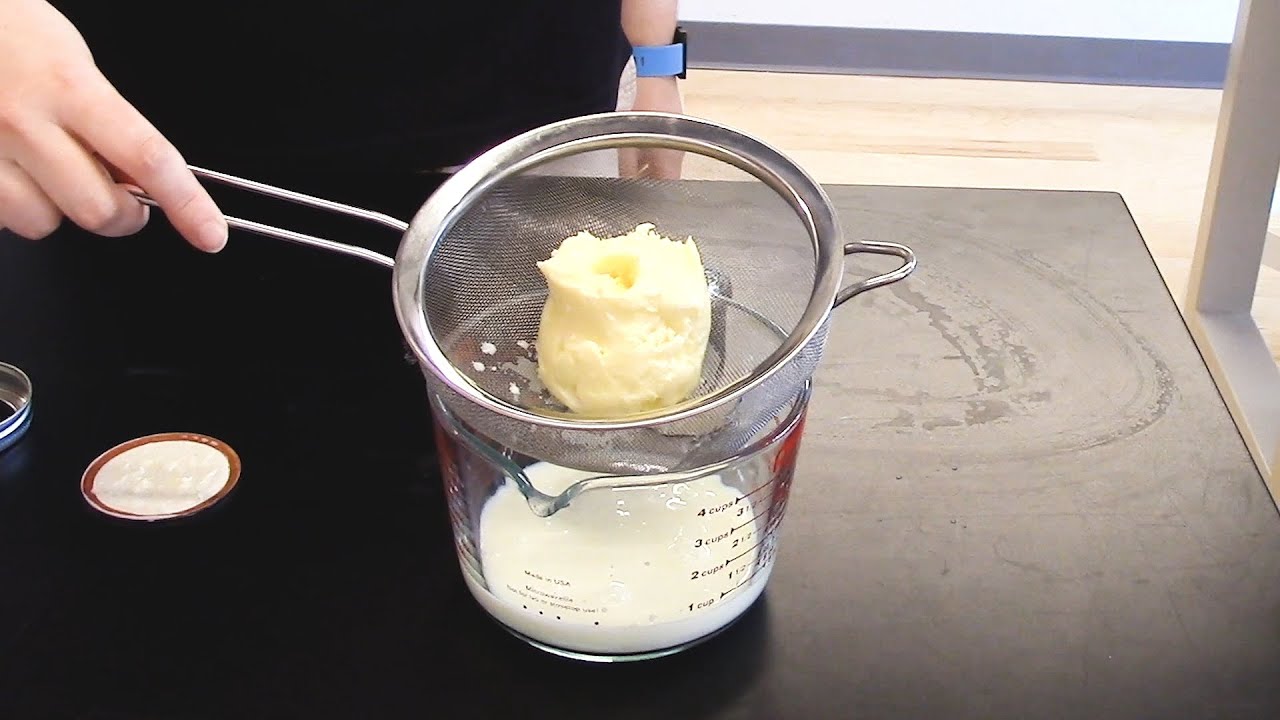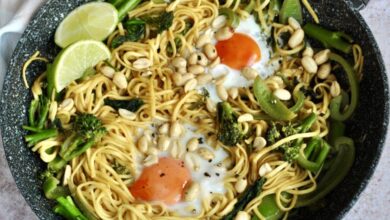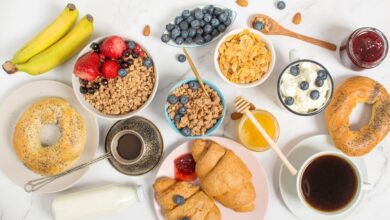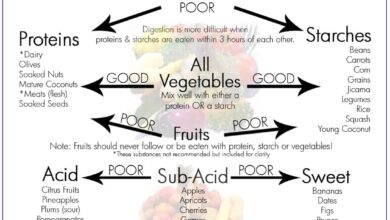
Everything You Need to Know About Butter
Everything you need to know about butter takes center stage, a culinary staple that has graced tables and kitchens for centuries. From its humble beginnings to its modern-day ubiquity, butter’s story is one of rich history, diverse applications, and undeniable deliciousness.
Whether you’re a seasoned chef or a curious home cook, understanding the nuances of this golden spread can elevate your culinary experiences and broaden your knowledge of this beloved ingredient.
This comprehensive guide delves into the fascinating world of butter, exploring its origins, production, nutritional value, culinary uses, and more. We’ll uncover the secrets behind its creamy texture, its role in both savory and sweet dishes, and the factors that influence its quality and shelf life.
Join us as we embark on a journey to demystify butter and discover everything you need to know about this culinary treasure.
What is Butter?
Butter is a dairy product made by churning fresh or fermented cream or milk. It’s a staple in many cuisines around the world, prized for its rich flavor and creamy texture.
Butter’s History and Evolution
Butter has a long history, dating back thousands of years. Archaeological evidence suggests that butter was first produced in ancient civilizations like Mesopotamia and Egypt. The process of churning cream to separate butterfat from buttermilk was a common practice in these early societies.
Butter’s production and use have evolved over time. In the past, butter was primarily made by hand using wooden churns. Today, commercial butter production relies on sophisticated machinery that can churn large quantities of cream efficiently.
Types of Butter
Butter can be classified based on the source of milk and its fat content.
Butter by Milk Source
- Cow Butter:This is the most common type of butter, made from cow’s milk. It’s known for its rich, creamy flavor and is widely available in supermarkets.
- Goat Butter:Goat butter has a slightly tangy flavor and a lighter texture than cow butter. It’s often used in Middle Eastern and Mediterranean cuisines.
- Sheep Butter:Sheep butter is typically used in regions where sheep are abundant, such as the Mediterranean and Middle East. It has a strong, savory flavor and a firmer texture.
- Buffalo Butter:Buffalo butter is popular in South Asia and has a rich, slightly sweet flavor. It’s often used in curries and other traditional dishes.
Butter by Fat Content
- Salted Butter:This type of butter contains salt, which helps preserve it and enhances its flavor. It’s the most common type of butter found in supermarkets.
- Unsalted Butter:Unsalted butter is preferred for cooking and baking because it allows you to control the amount of salt in your dishes. It’s also used in baking, where salt can affect the texture and rise of baked goods.
- Clarified Butter:This type of butter is made by melting butter and removing the milk solids and water. It has a higher smoke point than regular butter, making it ideal for high-heat cooking.
Butter Production

Butter, a staple in kitchens worldwide, is the product of churning cream, a process that separates the fat globules from the buttermilk. This transformation from liquid cream to solid butter involves various methods, each with its unique history and characteristics.
Butter, a staple in many kitchens, has been the subject of much debate over the years. While it’s undeniably delicious, its high fat content can be a concern for those watching their weight. If you’re looking for ways to burn calories, you might wonder if simply standing up instead of sitting down is enough to make a difference.
The truth is, does standing burn enough calories to aid weight loss ? It might not be a magic bullet, but it’s a small change that can add up over time. Ultimately, the best approach to managing your weight involves a balanced diet and regular exercise, whether that’s standing more or engaging in more active activities.
Traditional Butter Production
Traditional butter production methods have been practiced for centuries, often relying on manual labor and simple tools. These techniques, passed down through generations, highlight the ingenuity and resourcefulness of people in utilizing available resources.
- Hand Churning:This method involves vigorously shaking a container filled with cream until the fat globules coalesce into butter. Traditional tools like wooden churns or clay pots were used for this purpose. The process can be time-consuming, requiring considerable physical effort.
Butter is a staple in many kitchens, and understanding how to use it effectively is key to unlocking delicious flavors. From melting it for sauces to incorporating it into dough, mastering butter techniques is a must for any aspiring chef.
It’s one of those essential cooking skills everyone should master that can elevate your dishes from good to great. So, whether you’re a seasoned cook or just starting out, learning everything you need to know about butter is a journey worth taking.
- Butter Making with a Butter Paddle:This technique involves using a wooden paddle to agitate cream in a container. The paddle’s shape and movement create friction, separating the fat from the buttermilk. This method is more efficient than hand churning but still requires manual effort.
Modern Butter Production, Everything you need to know about butter
Modern butter production utilizes advanced technology and machinery to streamline the process, ensuring consistent quality and large-scale production.
Butter, a staple in many kitchens, is a versatile ingredient that can be used in everything from baking to cooking. While its rich flavor and creamy texture are undeniably delicious, it’s important to be mindful of its fat content. It’s interesting to note how lifestyle changes can impact our health, like in the story of Charlotte, who shed half her body weight during a vacation.
How a vacation helped Charlotte lose half her body weight is a testament to the power of a shift in routine and mindset. Returning to the topic of butter, understanding its nutritional profile and using it in moderation can help us enjoy its benefits without compromising our health.
- Centrifugal Separation:This method uses a centrifuge to separate cream from milk. The cream is then further processed to remove excess moisture and impurities.
- Continuous Butter Churning:This method involves a continuous flow of cream through a specialized churn. The churn uses a rotating drum with blades that agitate the cream, separating the fat from the buttermilk. This method is highly efficient, allowing for large-scale butter production.
- Packaging:After churning, butter is washed and salted (if desired) to enhance flavor and preservation. It is then packaged in various forms, including sticks, tubs, and blocks, ready for distribution and consumption.
Making Butter at Home
Making butter at home is a rewarding experience, allowing you to control the ingredients and create fresh, flavorful butter.
- Gather your ingredients:You will need heavy cream (at least 30% fat content) and a container with a lid.
- Chill the cream:Place the cream in the refrigerator for at least 2 hours, or until it is very cold.
- Churn the cream:Pour the chilled cream into the container and shake vigorously for 10-15 minutes, or until the cream separates into butter and buttermilk.
- Drain the buttermilk:Once the butter has formed, drain the buttermilk through a fine-mesh sieve.
- Wash the butter:Rinse the butter with cold water until the water runs clear. This removes any remaining buttermilk.
- Salt the butter (optional):Add salt to the butter to taste, if desired.
- Shape and store the butter:Shape the butter into a desired form and store it in the refrigerator for up to 2 weeks.
Nutritional Value of Butter: Everything You Need To Know About Butter

Butter, a staple in many cuisines worldwide, is a rich and flavorful dairy product that adds a unique taste and texture to dishes. While it’s often associated with its high fat content, butter also provides several essential nutrients that contribute to a balanced diet.
Understanding the nutritional composition of butter, its potential benefits, and risks is crucial for making informed dietary choices.
Nutritional Composition of Butter
Butter is primarily composed of fat, with a small amount of water, protein, and lactose. The fat content of butter is approximately 80%, making it a calorie-dense food. This fat is primarily saturated fat, but butter also contains a small amount of monounsaturated and polyunsaturated fats.
Butter is a good source of several vitamins and minerals, including:* Vitamin A:Butter is a good source of vitamin A, which is essential for vision, skin health, and immune function.
Vitamin D Butter contains vitamin D, which plays a vital role in calcium absorption and bone health.
Vitamin E Butter is a source of vitamin E, an antioxidant that protects cells from damage.
Vitamin K Butter contains vitamin K, which is essential for blood clotting and bone health.
Choline Butter provides choline, a nutrient that supports brain function and healthy cell development.
Health Benefits of Butter
Butter has been linked to several potential health benefits, including:* Improved Bone Health:The vitamin D and calcium in butter contribute to bone health.
Enhanced Brain Function Choline in butter is essential for brain function and memory.
Improved Skin Health Vitamin A in butter supports skin health and can help protect against skin damage.
Reduced Risk of Heart Disease Some studies suggest that moderate butter consumption may not negatively impact heart health.
Potential Risks of Butter Consumption
While butter offers some potential benefits, it’s essential to be mindful of its potential risks:* High Saturated Fat Content:Butter is high in saturated fat, which can raise LDL (bad) cholesterol levels when consumed in excess.
Increased Risk of Heart Disease Consuming large amounts of butter can increase the risk of heart disease, especially for individuals with pre-existing conditions.
High Calorie Content Butter is calorie-dense, and excessive consumption can lead to weight gain.
Comparison of Butter with Other Fats and Oils
Butter is often compared to other fats and oils, such as olive oil, coconut oil, and margarine. While butter is primarily composed of saturated fat, other fats and oils contain different proportions of saturated, monounsaturated, and polyunsaturated fats. * Olive Oil:Olive oil is high in monounsaturated fats and antioxidants, which are considered beneficial for heart health.
Coconut Oil Coconut oil is high in saturated fat, but it contains medium-chain triglycerides (MCTs), which may provide some metabolic benefits.
Margarine Margarine is a butter substitute that typically contains a blend of vegetable oils and is often lower in saturated fat than butter.
It’s important to note that the health effects of different fats and oils can vary depending on their composition and how they are used in cooking.
Closure
As we conclude our exploration of the world of butter, we are left with a newfound appreciation for this versatile and beloved ingredient. From its historical significance to its modern-day culinary applications, butter has played a pivotal role in shaping our food culture.
By understanding its origins, production, nutritional value, and uses, we can unlock its full potential in the kitchen and enjoy its deliciousness with greater knowledge and appreciation.






